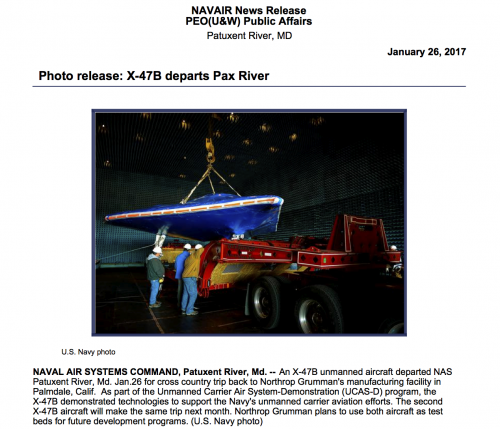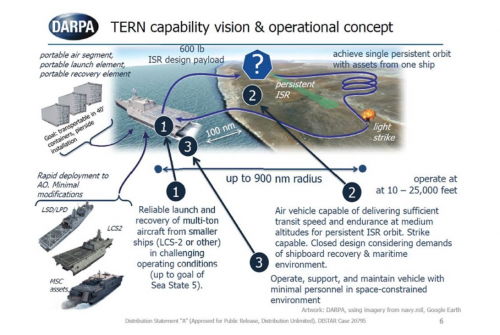AeroFranz said:
NeilChapman said:
TERN has only been developed since 2013 and prototype will fly this year. Looks so good DARPA's asked for a second airframe.
Not sure DARPA asked for it or more likely NG proposed it. I'll give you that DARPA certainly had to agree to fund a second one.
But my view is that this is a VTOL experimental aircraft, regardless of how well it's designed it has an even chance of crashing. Getting a second airframe is more likely a nice insurance in case Murphy rears up its ugly head. If you don't have a second airframe ready and you crash, the program's as good as dead, it takes too long to build it.
Anyway, it's definitely a good sign but not a resounding endorsement, IMHO.
Program stated in 2013 they planned for 40 month program. To fly in 2017.
https://www.fbo.gov/index?s=opportunity&mode=form&id=9ce806a2ec0087915129a5c45ac737d2&tab=core&_cview=0
Oct/13 - Phase 1 - 5 firms - Conceptual Design - Preliminary Design & Risk Reduction
https://defensetech.org/2013/12/19/darpa-taps-firms-for-new-uas-effort/#ixzz2piktm2Zp
Jun/14 - DARPA signs MOA w/Office of Naval Research (ONR) to develop "Tern" jointly.
http://www.darpa.mil/news-events/2014-06-11
Mar/15 - Phase 2 - 2 firms - Technical Maturation - Preliminary Design Review
Sep/15 - Phase 2 - AeroVironment notified they will not participate in Phase 3.
Dec/15 - Phase 3 - 1 firm - EMD for Full Scale demonstrator - Delivery Nov/17
http://www.militaryaerospace.com/articles/2016/06/uavs-small-surface-ships.html
Jun/16 - Phase 3 - DARPA requests 2nd Full Scale demonstrator for ~USD18M
“DARPA has been thinking about building a second Tern test vehicle for well over a year,” said Dan Patt, DARPA program manager. “Adding the second technology demonstrator enhances the robustness of the flight demonstration program and enables military partners to work with us on maturation, including testing different payloads and experimenting with different approaches to operational usage.”
http://www.darpa.mil/news-events/2016-11-17
Oct/16 - Phase 3 Milestone - Critical Design Review of Engine (horiz & vert flight) & approval of the hardware and software architecture that will allow the air vehicle to launch and recover vertically from small-deck ships and transition to horizontal flight.
http://news.northropgrumman.com/news/releases/northrop-grumman-passes-key-development-milestones-on-darpaus-navy-tern-program
---
IMHO this program has gone pretty well. If you look at the timeline, they are within the margins considering they lost a few months around the new fiscal year and many programs have been on a slow track. Second hand built airframe is ~USD18Million. Passed CDR for flight control software and engine integration. With the state of flight control software and modeling they are likely to be very close with initial build. Would be helpful to know if the weight is on target.
All of this is to say that "Tern" is likely to be 2/3 of UCLASS with many more places to land.
How do you calculate "an even chance of crashing?" I don't see it.
Att: 1
Oddball: Why don't you knock it off with them negative waves? Why don't you dig how beautiful it is out here? Why don't you say something righteous and hopeful for a change?
Moriarty: Crap!
Att: 2
Tern concept artwork



